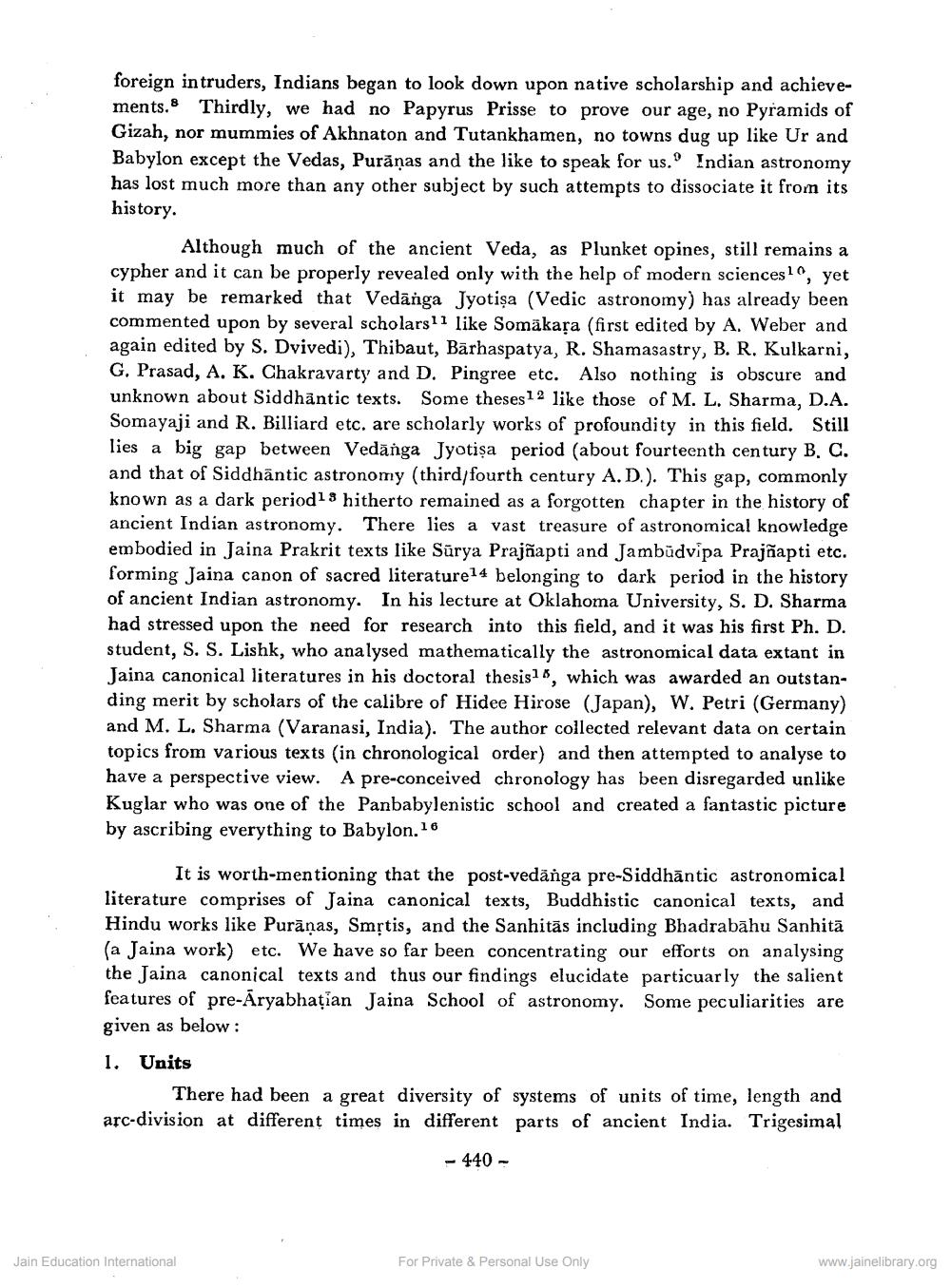Book Title: Studies in Jain Astronomy Postvedang Prisiddhantik Indian Astronomy Author(s): S S Lishk, S D Sharma Publisher: Z_Kailashchandra_Shastri_Abhinandan_Granth_012048.pdf View full book textPage 2
________________ foreign intruders, Indians began to look down upon native scholarship and achievements. Thirdly, we had no Papyrus Prisse to prove our age, no Pyramids of Gizah, nor mummies of Akhnaton and Tutankhamen, no towns dug up like Ur and Babylon except the Vedas, Purăņas and the like to speak for us.' Indian astronomy has lost much more than any other subject by such attempts to dissociate it from its history. Although much of the ancient Veda, as Plunket opines, still remains a cypher and it can be properly revealed only with the help of modern sciences 10, yet it may be remarked that Vedānga Jyotişa (Vedic astronomy) has already been commented upon by several scholars11 like Somäkasa (first edited by A. Weber and again edited by S. Dvivedi), Thibaut, Bārhaspatya, R. Shamasastry, B. R. Kulkarni, G. Prasad, A. K. Chakravarty and D. Pingree etc. Also nothing is obscure and unknown about Siddhāntic texts. Some theses 12 like those of M. L. Sharma, D.A. Somayaji and R. Billiard etc. are scholarly works of profoundity in this field. Still lies a big gap between Vedānga Jyotişa period (about fourteenth century B. C. and that of Siddhāntic astronomy (third/fourth century A.D.). This gap, commonly known as a dark periodis hitherto remained as a forgotten chapter in the history of ancient Indian astronomy. There lies a vast treasure of astronomical knowledge embodied in Jaina Prakrit texts like Sūrya Prajñapti and Jambūdvipa Prajāapti etc. forming Jaina canon of sacred literature14 belonging to dark period in the history of ancient Indian astronomy. In his lecture at Oklahoma University, S. D. Sharma had stressed upon the need for research into this field, and it was his first Ph. D. student, S. S. Lishk, who analysed mathematically the astronomical data extant in Jaina canonical literatures in his doctoral thesisis, which was awarded an outstanding merit by scholars of the calibre of Hidee Hirose (Japan), W. Petri (Germany) and M. L. Sharma (Varanasi, India). The author collected relevant data on certain topics from various texts (in chronological order) and then attempted to analyse to have a perspective view. A pre-conceived chronology has been disregarded unlike Kuglar who was one of the Panbabylenistic school and created a fantastic picture by ascribing everything to Babylon. 16 It is worth-mentioning that the post-vedānga pre-Siddhāntic astronomical literature comprises of Jaina canonical texts, Buddhistic canonical texts, and Hindu works like Purānas, Smộtis, and the Sanhitās including Bhadrabāhu Sanhitā (a Jaina work) etc. We have so far been concentrating our efforts on analysing the Jaina canonical texts and thus our findings elucidate particuarly the salient features of pre-Aryabhatian Jaina School of astronomy. Some peculiarities are given as below: 1. Units There had been a great diversity of systems of units of time, length and arc-division at different times in different parts of ancient India. Trigesimal - 440 - Jain Education International For Private & Personal Use Only www.jainelibrary.orgPage Navigation
1 2 3 4 5 6 7
